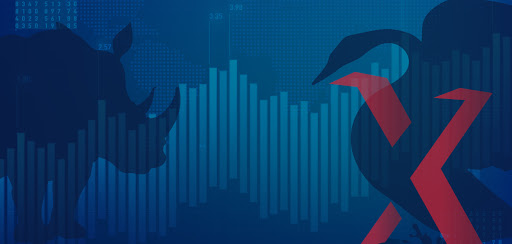It is well documented that equity bulls don’t like uncertainty. There’s an inverse correlation between volatility and equity returns, which is very strong.
Intuitively, it makes sense. A lower volatility means investors are less worried about the risk associated with their investments and they don’t have to scramble to buy protection or hedges. In simple words, the more confident the bulls are the less concerned they would be about an upcoming downturn. They would be less inclined to purchase insurance, which in turn, brings down the volatility premium.
In this context, it would be prudent to throw some light on and more importantly differentiate between implied volatility and realized volatility.
Implied Volatility
Implied volatility is what you pay – it is the volatility that’s contained or reflected in an option’s price. Implied volatility is the future volatility expected by the options market. Just like most aspects of financial markets, the key here is not the absolute number but what is priced in by markets with respect to the risks on the horizon.
The CBOE Volatility Index (VIX) is a real-time index derived from the prices of the S&P 500 Index options with near-term expiration dates. VIX is often seen as a way to gauge market sentiment, and in particular, the degree of fear among market participants.
CBOE VIX touched a low of 15.38 in February 2020, when the COVID mayhem was yet to unfold.
Most long-only fund managers and institutional investors use options to hedge their portfolios against unexpected downturns. The fact that VIX has gone back to the pre-pandemic levels means that investors are starting to get complacent regarding the possibility of another sizable correction. Implied volatility has come down across maturities suggesting that markets have started to price out some uncertainty into the next year.
Markets are betting on a ‘Goldilocks Scenario’, wherein the economic growth would be robust to support equities but not high enough to cause sizeable, persistent/sticky inflation. This, in turn, may prompt the Central Banks to pull the rug with respect to easy money.
It is clear that Volatility is on Sale given the low premium on options currently. It may be prudent to use this low volatility environment to protect some of the gains, made especially with many segments looking frothy.

Realized Volatility
Realized volatility is what you get – it is the volatility realized in the underlying market. It can be calculated from the underlying price moves, and option prices don’t affect realized volatility in any way. In fact, you can calculate realized volatility even for securities without any options on them. On the contrary, there is no implied volatility without options.
In other words, implied volatility is a market-based estimate on what the realized volatility is going to be like. Skewed positioning and flows can impact implied volatility to the extent that many times it is reduced to a poor estimate and more of a short-term demand/supply equilibrium.
To summarize, it is not always that you get good quality items on a sale, but current Volatility levels point to ‘a steal of a deal’.
There is a lot of chat regarding ‘Investors not wanting to miss the bus’ with respect to the FOMO (Fear of Missing Out) syndrome but sometimes ‘It is better to miss the bus than get hit by the bus’.





